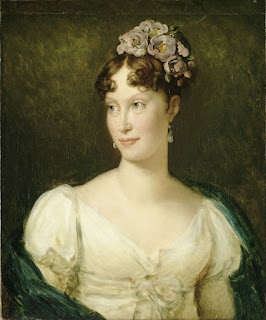Napoleon defeats the Austrians and boosts his reputation
Napoleon won an important victory on Italian soil on this day in 1797 when, despite his troops being outnumbered, they defeated an attacking Austrian army. He triumphed in the Battle of Rivoli near the village of Rivoli Veronese, in what was then part of the Republic of Venice.
Henri Félix Emmanuel Philippoteaux's painting of
Napoleon (mounted, centre) at the Battle of Rivoli
Austrian soldiers were attempting to move south to relieve a garrison of their men who were under siege from the French in Mantua. But their defeat at the Battle of Rivoli led to them having to surrender Mantua to their enemy a few weeks later.
Napoleon’s victory in the Battle of Rivoli effectively consolidated the position of the French in northern Italy and enhanced his reputation as a capable military commander.
Under the command of General Jozsef Alvinczi, the Austrian troops had planned to overwhelm the French soldiers serving under General Barthelemy Joubert when they encountered them in the mountains to the east of Lake Garda.
They deployed 28,000 men in five columns against the French to gain access to the open country north of Mantua, planning to march to the city and complete their mission.
 |
| Eduoard Detaille's painting of Napoleon as he looks over captured Austrian troops |
Alvinczi united three columns of Austrian troops near the comune of Caprino Veronese while other Austrian troops were advancing to the north of Monte Baldo and progressing along the roads to either side of the River Adige.
The French were forced out of the village of Osteria and on to the Rivoli plateau and the situation began to look dangerous for them, with the Austrian troops preventing Napoleon’s men from retreating.
However, Napoleon turned his attention to the Austrian troops on either side of the river. The French soldiers poured canister shot at point blank range on the advancing Austrians and as a result the troops on horseback broke ranks and stampeded through their own infantry, causing chaos.
Other French soldiers assaulted the Austrians from the front and a group of 26 French mounted soldiers charged straight into them, resulting in an Austrian battalion and five flags being captured.
By midday, French cavalry commanded by Joachim Murat had reached the area and were also able to charge against the Austrians, driving them back to the position they had occupied earlier in the day. The Austrian troops were then ordered by their commanders to move back still further out of artillery range.
 |
| Joachim Murat led his men in a decisive charge |
When the Austrians finally surrendered the city of Mantua, their soldiers were allowed to go home by the French, after they swore an oath not to serve against them for a year.
Napoleon, accompanied by 8,000 of his men, went to Rome to try to reach a settlement with the Papal States. With the Austrians finally driven out of Italy, Pope Pius VI agreed to an armistice dictated by Napoleon.
But the Austrians still refused to negotiate peace with the French.
Therefore, Napoleon embarked on another military campaign that was to take him all the way to the city of Vienna.
A street in Paris was later named Rue de Rivoli to commemorate the French victory on 14 January 1797 at the Battle of Rivoli.
Travel tip:
A view over the village of Rivoli Veronese and
the surrounding countryside
Rivoli Veronese is a comune in the province of Verona in the Veneto, situated on hills overlooking the right bank of the River Adige. Throughout history the area around Rivoli has always been seen as difficult territory by armies and another important battle was fought there in 1848 during the first Italian War of Independence between Austrian and Piedmontese troops. With lakes on one side and mountains on the other, the scenery is spectacular and Rivoli is visited by travellers staying in Lake Garda. Napoleon had a commemorative monument built on the site of the battlefield, an 80-foot high column that was torn down by the Austrians in 1814. Today, a few ruins are the only legacy of the column but there is a commemorative plaque that says in French: ‘The soldiers of the French army in Italy 1918, and dedicated to their glorious forebears of 1797.’ On Rivoli's main street, a small museum has a few items from the battle in a collection that aims to demonstrate the influence of Napoleon on the history of Italy.
Travel tip:
The facade of the Palazzo Ducale in Mantua,
the former seat of the Gonzaga family
The historic city of Mantua, which was the ultimate destination for the Austrian troops, lies in Lombardy, to the south east of Milan. In the Renaissance heart of the city is Piazza Mantegna, where the 15th century Basilica di Sant’Andrea houses the tomb of the artist, Andrea Mantegna. The church was originally built to accommodate the large number of pilgrims who came to Mantua to see a precious relic, an ampoule containing what were believed to be drops of Christ’s blood mixed with earth, which it was claimed had been collected at the site of his crucifixion by a Roman soldier. Mantua is also famous for its Renaissance Palazzo Ducale, the seat of the Gonzaga family between 1328 and 1707. The Camera degli Sposi in the palace is decorated with frescoes by Andrea Mantegna, depicting the life of Eleonora’s ancestor, Ludovico Gonzaga, and his family in the 15th century. The beautiful backgrounds of imaginary cities and ruins reflect Mantegna’s love of classical architecture.
Also on this day:
1451: The birth of composer Franchino Gaffurio
1507: The birth of painter Luca Longhi
1552: The birth of lawyer Alberico Gentili
1883: The birth of fashion designer Nina Ricci
1919: The birth of politician Giulio Andreotti
1925: The birth of Ellesse founder Leonardo Servadio




















